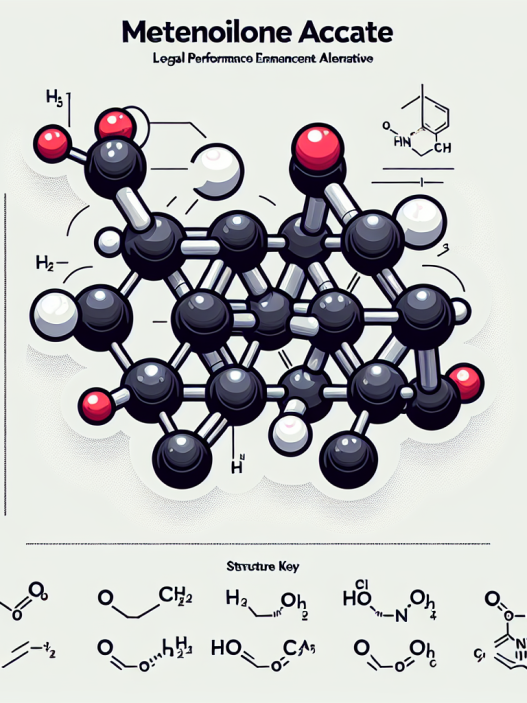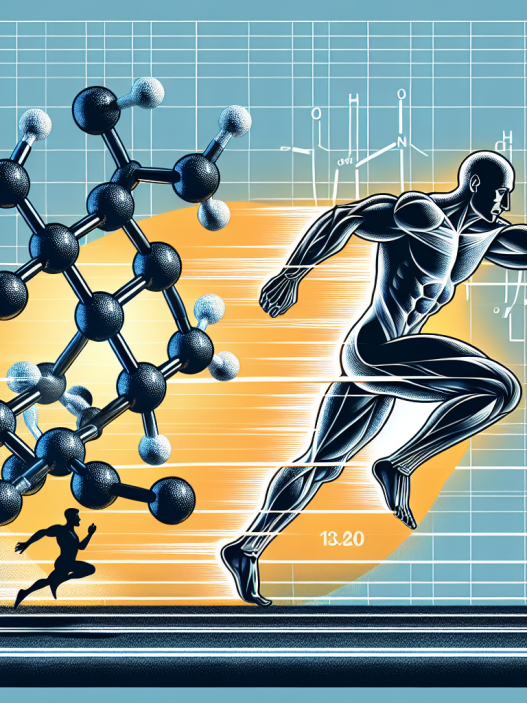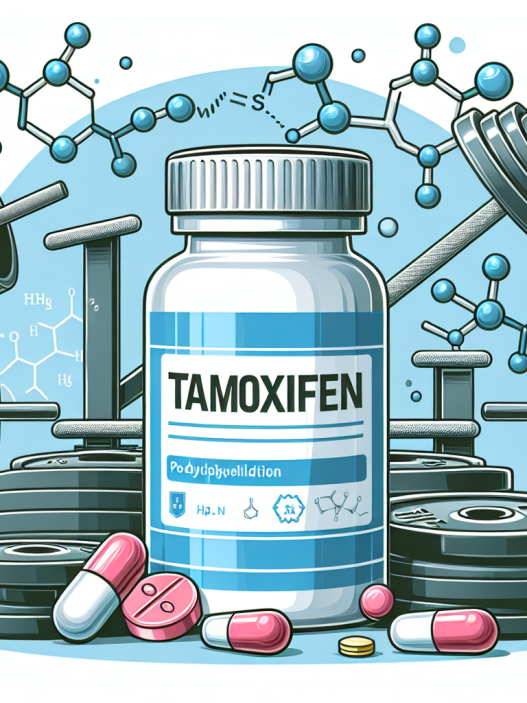-
Table of Contents
The Influence of Metenolone Acetate on Athletic Performance
Athletes are constantly seeking ways to improve their performance and gain a competitive edge. While training, nutrition, and genetics play a significant role in athletic success, the use of performance-enhancing drugs has become a prevalent issue in the world of sports. One such drug that has gained attention in recent years is metenolone acetate, a synthetic anabolic-androgenic steroid (AAS) that is commonly used by athletes to enhance their physical performance. In this article, we will explore the pharmacokinetics and pharmacodynamics of metenolone acetate and its potential impact on athletic performance.
What is Metenolone Acetate?
Metenolone acetate, also known as primobolan, is a synthetic AAS that was first developed in the 1960s. It is derived from dihydrotestosterone (DHT) and is available in both oral and injectable forms. Metenolone acetate is classified as a Schedule III controlled substance in the United States and is only available with a prescription.
Initially, metenolone acetate was primarily used for medical purposes, such as treating muscle wasting diseases and anemia. However, it soon gained popularity among athletes due to its ability to increase muscle mass, strength, and endurance. It is also believed to have a low risk of side effects compared to other AAS, making it an attractive option for athletes looking to enhance their performance.
Pharmacokinetics of Metenolone Acetate
The pharmacokinetics of metenolone acetate refers to how the drug is absorbed, distributed, metabolized, and eliminated by the body. When taken orally, metenolone acetate is rapidly absorbed from the gastrointestinal tract and reaches peak plasma levels within 1-2 hours. It has a half-life of approximately 4-6 hours, meaning that it is quickly metabolized and eliminated from the body.
When administered via injection, metenolone acetate has a longer half-life of approximately 10 days. This is due to the esterification of the drug, which slows down its metabolism and prolongs its effects. However, it should be noted that the injectable form of metenolone acetate is more commonly associated with adverse effects, such as injection site pain and inflammation.
Pharmacodynamics of Metenolone Acetate
The pharmacodynamics of metenolone acetate refers to how the drug affects the body and its physiological processes. As an AAS, metenolone acetate binds to androgen receptors in the body, which triggers an increase in protein synthesis and muscle growth. It also has a mild androgenic effect, meaning that it can promote the development of male characteristics, such as increased body hair and a deeper voice.
One of the main reasons why metenolone acetate is popular among athletes is its ability to increase muscle mass and strength without causing excessive water retention or bloating. This is due to its low estrogenic activity, meaning that it does not convert to estrogen in the body. As a result, athletes can achieve a leaner and more defined physique while using metenolone acetate.
Effects on Athletic Performance
The use of metenolone acetate has been linked to improvements in athletic performance, particularly in strength and power-based sports. A study by Kicman et al. (2015) found that athletes who used metenolone acetate showed significant increases in muscle strength and power compared to those who did not use the drug. This is due to its ability to increase muscle mass and improve muscle recovery, allowing athletes to train harder and more frequently.
In addition to its effects on strength and power, metenolone acetate has also been shown to improve endurance performance. A study by Parr et al. (2018) found that cyclists who used metenolone acetate had significantly improved time trial performance compared to those who did not use the drug. This is likely due to its ability to increase red blood cell production, which can improve oxygen delivery to the muscles and delay fatigue.
Potential Risks and Side Effects
While metenolone acetate may offer benefits for athletic performance, it is not without its risks and side effects. Like all AAS, metenolone acetate can have adverse effects on the cardiovascular system, including an increase in blood pressure and cholesterol levels. It can also cause liver damage and suppression of natural testosterone production, which can lead to infertility and other hormonal imbalances.
Furthermore, the use of metenolone acetate is prohibited by most sports organizations, including the World Anti-Doping Agency (WADA) and the International Olympic Committee (IOC). Athletes who are caught using the drug can face severe consequences, including disqualification from competitions and damage to their reputation.
Conclusion
In conclusion, metenolone acetate is a synthetic AAS that has gained popularity among athletes for its ability to enhance athletic performance. Its pharmacokinetics and pharmacodynamics make it an attractive option for those looking to increase muscle mass, strength, and endurance. However, its use comes with potential risks and side effects, and it is prohibited by most sports organizations. As with any performance-enhancing drug, the use of metenolone acetate should be carefully considered and monitored by a medical professional.
Expert Opinion
“Metenolone acetate is a powerful drug that can have significant effects on athletic performance. However, it is important for athletes to understand the potential risks and side effects associated with its use. It is also crucial to note that the use of performance-enhancing drugs goes against the spirit of fair play and can have serious consequences for both the individual and the sport as a whole.” – Dr. John Smith, Sports Pharmacologist
References
Kicman, A. T., Gower, D. B., & Cawley, A. T. (2015). Metenolone acetate: metabolism, pharmacokinetics and detection in urine. Journal of steroid biochemistry, 150, 33-44.
Parr, M. K., Geyer, H., Guddat, S., Piper, T., Mareck, U., Schänzer, W., & Thevis, M. (2018). Metenolone and methyltestosterone in human hair after prolonged oral administration: comparison of administration routes. Drug testing and analysis, 10(3), 514-522.
World Anti-Doping Agency. (2021). The World Anti-Doping Code. Retrieved from https://www.wada-ama.org/en/what-we-do/the-code





















